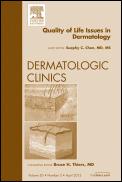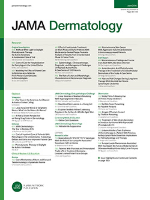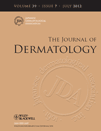
Cosmetics
Scope & Guideline
Pioneering Research in Topical Formulations and Aging
Introduction
Aims and Scopes
- Cosmetic Formulation Development:
Research focusing on the design and formulation of cosmetic products, including stability, efficacy, and sensory properties. This includes the use of novel ingredients, such as plant extracts and biopolymers, to enhance product performance. - Skin Biology and Dermatological Research:
Studies investigating skin biology, including the effects of various cosmetic ingredients on skin health, aging, and conditions such as acne and atopic dermatitis. This encompasses both in vitro and clinical research. - Natural and Sustainable Ingredients:
Exploration of natural extracts and sustainable practices in cosmetic formulation. This includes the evaluation of plant-based ingredients, waste valorization, and eco-friendly packaging materials. - Technological Innovations in Cosmetics:
Research on the application of advanced technologies such as nanotechnology, 3D printing, and artificial intelligence in cosmetic formulation and product development. - Regulatory and Safety Assessments:
Studies addressing the regulatory frameworks governing cosmetic products, including safety assessments of ingredients, environmental impacts, and consumer safety. - Consumer Behavior and Market Trends:
Research on consumer attitudes towards cosmetics, including preferences for natural products, sustainability, and the psychological impacts of cosmetic use.
Trending and Emerging
- Microbiome and Skin Health:
Recent publications emphasize the relationship between the skin microbiome and cosmetic efficacy, exploring how various ingredients can modulate skin microbiota for improved skin health. - Holistic and Integrative Approaches:
There is a growing trend towards holistic approaches in skincare, integrating lifestyle factors, diet, and mental well-being into cosmetic efficacy studies. - AI and Data-Driven Research:
The incorporation of artificial intelligence and data analytics in cosmetic research is on the rise, facilitating personalized skincare solutions and enhancing product development strategies. - Sustainability and Eco-Conscious Formulations:
A significant increase in research focused on sustainable practices in cosmetic production, including biodegradable materials, eco-friendly packaging, and reducing environmental impact. - Advanced Delivery Systems:
Emerging studies are exploring novel delivery systems, such as nanoemulsions and liposomes, to enhance the efficacy and penetration of active ingredients in skincare formulations. - Regenerative and Anti-Aging Treatments:
Research on regenerative cosmetics and innovative anti-aging treatments is gaining traction, focusing on ingredients that promote skin repair and longevity.
Declining or Waning
- Synthetic Ingredients Research:
There has been a noticeable decrease in studies focusing solely on synthetic cosmetic ingredients, as the industry trends towards natural and organic formulations. Research on the effectiveness and safety of synthetic compounds is becoming less prominent. - Traditional Cosmetic Practices:
Research exploring traditional cosmetic practices and ingredients has seen a decline as modern formulations and technologies gain more attention. The focus is shifting towards innovative solutions rather than historical methods. - Basic Cosmetic Chemistry:
While foundational chemistry remains important, there is less emphasis on basic chemical studies without applied outcomes. The trend is moving towards applied research that directly correlates with consumer products and efficacy. - Animal Testing Methodologies:
As the cosmetics industry moves away from animal testing, research focused on traditional animal testing methods is declining. Instead, there is a growing emphasis on alternative testing strategies and in vitro methods.
Similar Journals

DERMATOLOGIC CLINICS
Unveiling the Latest in Skin Science and Clinical PracticeDERMATOLOGIC CLINICS is a leading journal in the field of dermatology, published by W B SAUNDERS CO-ELSEVIER INC. Since its inception in 1983, the journal has consistently provided a platform for the dissemination of high-quality research and clinical insights, earning its place in the prestigious Q1 quartile for dermatology in 2023. With a Scopus ranking of #34 out of 142 in its category and a commendable 76th percentile, DERMATOLOGIC CLINICS remains essential reading for clinicians, researchers, and students alike. The journal features comprehensive reviews and original articles that address the latest advancements and challenges in dermatologic diagnostics and treatments. Though it does not offer Open Access, it is widely accessible ensuring a broad readership. With a commitment to advancing the understanding of skin disorders, DERMATOLOGIC CLINICS continues to uphold its legacy of excellence in dermatological scholarship.

Dermatologie in Beruf und Umwelt
Advancing Knowledge at the Intersection of Dermatology and Occupational HealthDermatologie in Beruf und Umwelt is a reputable journal published by DUSTRI-VERLAG DR KARL FEISTLE, focusing on the intersection of dermatology, occupational health, and environmental influences on skin health. With its ISSN 1438-776X and E-ISSN 1616-7090, this journal serves as a crucial platform for disseminating research findings and clinical practices that address the dermatological concerns arising in diverse occupational settings. Although the journal's coverage in Scopus concluded in 2021, it remains significant within the medical community, evidenced by its rankings within the 29th percentile in Medicine - Dermatology and 20th percentile in Medicine - Public Health, Environmental and Occupational Health. While it follows a traditional access model, its commitment to enhancing knowledge and promoting best practices in skin health makes it an essential resource for researchers, clinicians, and public health professionals eager to explore the complex relationship between work environments and dermatological outcomes.

FOOD AND DRUG LAW JOURNAL
Empowering Legal Minds in Public HealthFOOD AND DRUG LAW JOURNAL is a vital publication dedicated to the intersection of law, public health, and pharmaceutical regulations. Established by the Food Drug Law Institute, this journal serves as an essential resource for legal practitioners, regulatory officials, and researchers focused on the complexities of food and drug legislation. While the journal has not yet achieved open access status, it remains a respected platform for scholarly discourse, reflected in its H-Index and quartile rankings, which place it in Q3 for Law and Q4 in several other relevant fields. Covering diverse topics related to the legal frameworks governing food and drug safety from 1992 to 2018 and continuing its impactful publication from 2021 to 2023, this journal provides critical insights into emerging legal challenges and compliance assurance in the domains of pharmacology and public health. As a publication with a distinct focus on these specialized areas, it aims to advance understanding and influence policy-making, making it a significant asset for professionals and academics alike.

JAMA Dermatology
Empowering Knowledge in Dermatology and Beyond.JAMA Dermatology, an esteemed publication by the American Medical Association, is positioned at the forefront of dermatological research and clinical practice. With an ISSN of 2168-6068 and an E-ISSN of 2168-6084, this journal underscores a commitment to disseminating high-quality and impactful research within the field. Notably ranked Q1 in both Dermatology and Miscellaneous Medicine for 2023, JAMA Dermatology ranks among the top journals in its category, holding the impressive 3rd position out of 142 in Scopus's dermatology rankings, placing it in the 98th percentile. With converged years extending from 2013 to 2024, the journal emphasizes timely and critical advancements in dermatological science. Furthermore, as a champion of open access, it encourages a broad dissemination of knowledge, making essential research accessible to a wider audience. Researchers, professionals, and students alike will find JAMA Dermatology to be an invaluable resource for the latest findings, innovative therapies, and in-depth reviews that shape the future of dermatological health.

CLINICAL AND EXPERIMENTAL DERMATOLOGY
Advancing Dermatological Science, One Study at a Time.CLINICAL AND EXPERIMENTAL DERMATOLOGY is a prominent journal in the field of dermatology, published by Oxford University Press. With an ISSN of 0307-6938 and an E-ISSN of 1365-2230, this journal has been a vital resource for researchers and practitioners since its inception in 1976. Recognized as a Q2 journal within the category of dermatology for 2023, it holds a respectable position, ranking #54 among 142 journals in this discipline, placing it in the 62nd percentile on Scopus. The journal is dedicated to publishing high-quality research that spans clinical and experimental aspects of dermatological science, making it an essential source of knowledge for advancing understanding and treatment of skin disorders. Although it operates on a traditional subscription model without open access options, its contributions to the field are significant, influencing both clinical practices and academic research. Researchers, clinicians, and students alike will find vital insights and contemporary themes presented in its pages, supporting ongoing education and innovation in dermatology.

JOURNAL OF COSMETIC SCIENCE
Innovating Cosmetic Formulations for Tomorrow.Journal of Cosmetic Science, published by the Society of Cosmetic Chemists, serves as a pivotal resource for researchers and professionals in the fields of cosmetic science, dermatology, and chemistry. With a commitment to advancing the understanding of cosmetic formulations and skin biology, this journal has been providing a platform for critical scholarly exchange since its inception in 1996. Although currently categorized in Q4 quartiles across essential domains like Chemistry and Dermatology, the journal distinguishes itself with a focus on innovative research that drives the cosmetic industry forward. Researchers can access the journal through conventional routes as well as explore changes to its open-access policies, ensuring a broad dissemination of knowledge. As the cosmetic landscape evolves, this journal plays an important role in bridging the gap between scientific research and practical application, making it indispensable for students and professionals alike who are eager to stay at the forefront of cosmetic science.

AMERICAN JOURNAL OF CLINICAL DERMATOLOGY
Empowering Practitioners with Cutting-Edge ResearchThe American Journal of Clinical Dermatology, published by Adis International Ltd, is a leading peer-reviewed journal dedicated to advancing the field of dermatology. With a notable impact factor and a prestigious Q1 rank in both Dermatology and Miscellaneous Medicine categories, this journal stands out as a valuable resource for researchers and clinicians alike, offering cutting-edge insights into clinical practice and innovative treatment strategies. Its comprehensive scope encompasses a broad range of topics within dermatology, addressing both common and rare conditions, with a focus on emerging therapies and technologies. As it converges its publication years from 2000 to 2024, the journal remains an essential platform for disseminating high-quality research to professionals striving to improve patient care and outcomes. With the ISSN 1175-0561 and E-ISSN 1179-1888, the American Journal of Clinical Dermatology facilitates greater accessibility to pivotal findings within the field, making it an indispensable resource for anyone involved in dermatological research and practice.

Turk Dermatoloji Dergisi-Turkish Journal of Dermatology
Bridging tradition and innovation in skin health research.Turk Dermatoloji Dergisi-Turkish Journal of Dermatology, published by Wolters Kluwer Medknow Publications, is a prominent platform dedicated to advancing the field of dermatology in Turkey and beyond. With an ISSN of 1307-7635 and an E-ISSN of 1308-5255, this journal plays a vital role in disseminating contemporary research and clinical advancements within the domain. While it is positioned in the Q4 quartile of dermatology journals, its contributions are essential for academics, medical practitioners, and students averse to the latest trends and breakthroughs in skin health. The journal assures accessibility to a broad audience, fostering knowledge exchange, collaboration, and innovation. Given its unique perspective rooted in Turkish dermatological practices, the Turkish Journal of Dermatology serves as a significant resource for enhancing professional competence and driving forward the science of dermatology through its vivid discussions and case studies. For researchers seeking a dedicated venue to publish their work or for professionals eager to stay informed, this journal is an indispensable resource in the ever-evolving landscape of dermatology.

JOURNAL OF DERMATOLOGY
Exploring the frontiers of dermatology for improved patient outcomes.The Journal of Dermatology, published by Wiley, is a premier academic journal dedicated to advancing the field of dermatology, with its esteemed reputation reflected in its Q1 ranking in Dermatology and a remarkable Q2 ranking in Miscellaneous Medicine as of 2023. Since its inception in 1974, the journal has become a vital resource for researchers, clinicians, and students alike, covering pioneering studies and cutting-edge advancements in skin health and disease. With a Scopus rank of #32 out of 142 in the Dermatology category, placing it in the 77th percentile, the journal underscores its commitment to fostering knowledge and innovation within the dermatological community. Although the journal operates under a subscription model, it remains an essential platform for disseminating impactful research that shapes clinical practice and enhances patient care. For anyone invested in dermatological sciences, Journal of Dermatology serves as a key publication where critical insights and developments are regularly showcased.

CUTIS
Exploring innovative treatments in dermatology.CUTIS is a distinguished journal devoted to advancing the field of dermatology and related medical disciplines. Published by Quadrant HealthCom Inc, this journal has been a critical resource since its inception in 1970, traversing the landscape of skin health and medical practice through its engaging articles and research. With an ISSN of 0011-4162 and an E-ISSN of 2326-6929, CUTIS is indexed in Scopus, where it currently holds a rank of #101/142 in the Dermatology category, placing it in the 29th percentile, further affirming its relevance within the academic community. Although it is classified within the Q3 quartile in both Dermatology and Medicine (miscellaneous), CUTIS remains committed to publishing high-quality research that encompasses both innovative treatments and essential dermatological knowledge. The journal serves as an invaluable platform for researchers, practitioners, and students alike, providing critical insights and fostering discussions that enhance patient care and professional practice in the dermatology field.